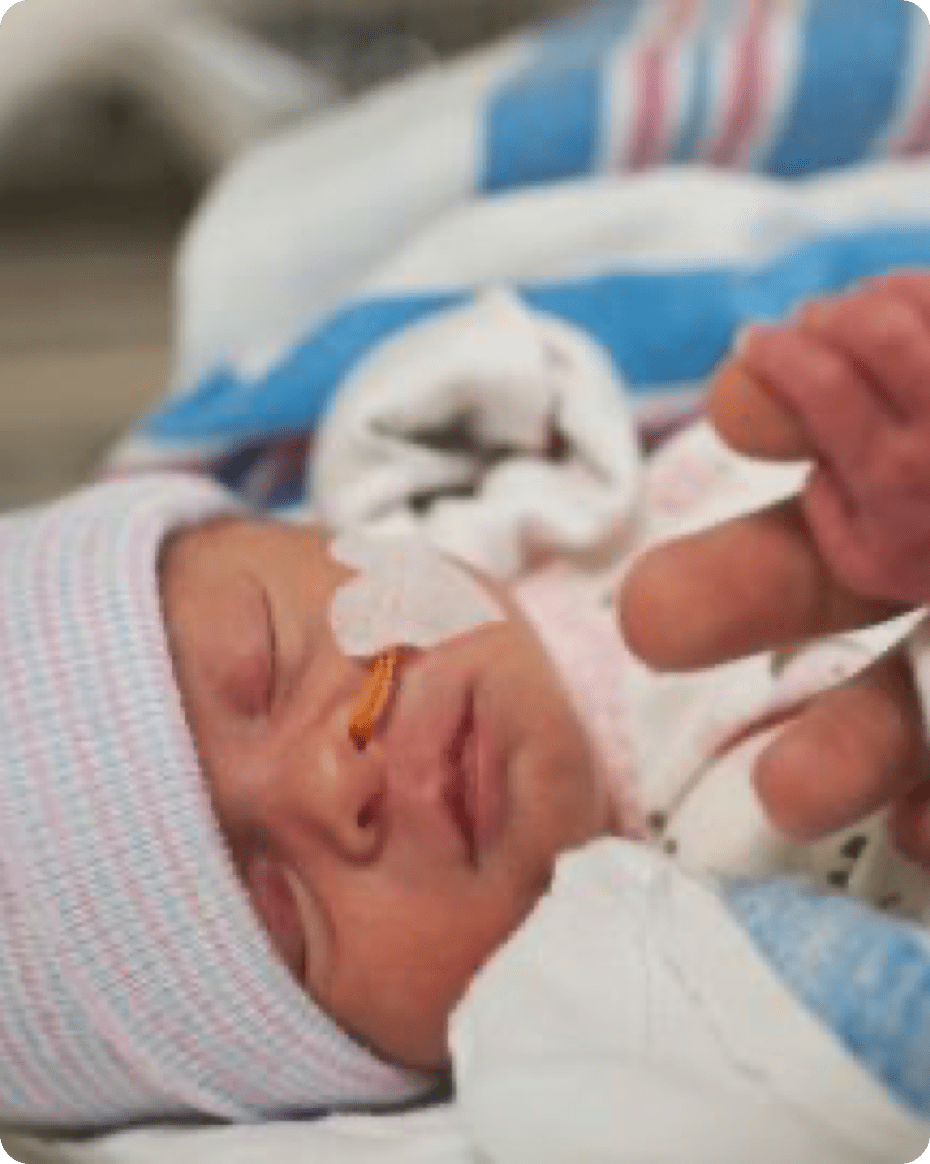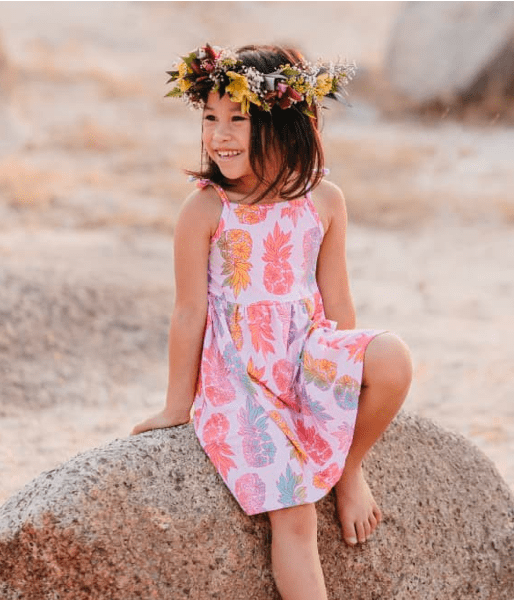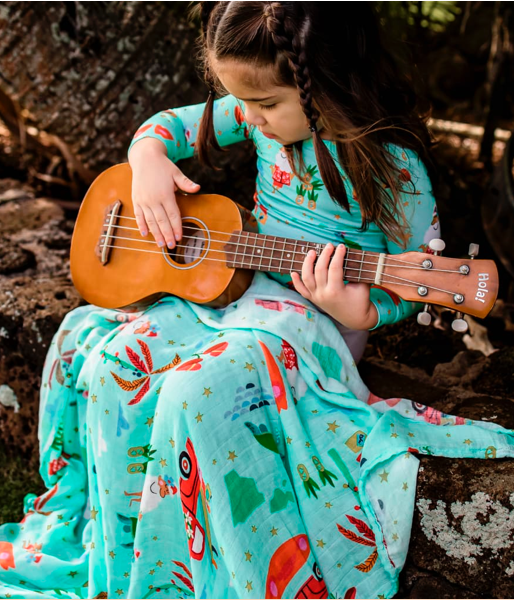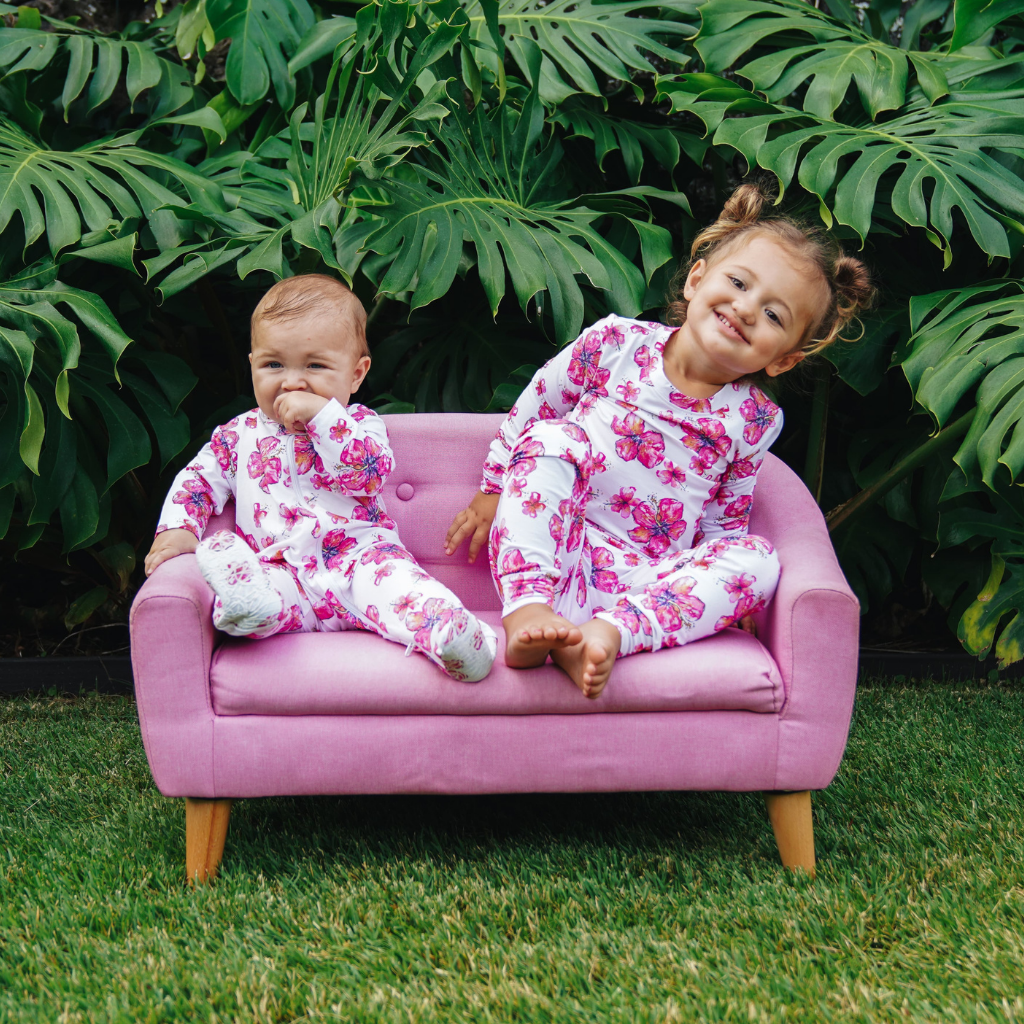For a lot of new parents, bathing your newborn can be one of the more intimidating aspects of their care. Even experienced Pediatrician Anik Huffman Cockroft felt a little nervous about bath time when she brought her little one home: “Although I’d welcomed many new miracles into the world and handled them with aloha on a daily basis, there’s a whole new humility when you’re the parent (and my street cred with you guys went up too). It’s normal to feel a little overwhelmed about bath time. However, it can transform into a magical time of the day that you and your little one anticipate with delight.”
With that in mind, she shares her answers to some of the most common questions she fields regarding bath time below:
Q: What do we need to do to prepare for baby’s bath?
A: It’s nice to be prepared so consider gathering all of baby’s bath paraphernalia beforehand, such as a washcloth, towel (built in hood is a bonus), soap, baby brush, lotion/oil, diaper, wipes, and a fresh outfit. This way you can focus on baby and can make the transitions more fluid into and out of the bath.
Q: When can I give baby his/her first bath?
A: Whenever you decide it’s best! You’re the boss Ladies and Gentlemen! Let’s keep it of the sprinkle/sponge bath variety until baby’s umbilical cord falls off though. You can, but don’t have to, bathe baby the first day that you’re home. If bathing’s not on your radar that day, just use some wipes to get up in baby’s neck creases, face, and hands.

Q: What is the ideal temperature for the bath?
A: Safety soapbox (pun intended) - please test the temperature of the water with your elbow or other area of your arm before beginning the bathing party. Keep in mind that the when in the womb, their “bath” of amniotic fluid was around 99.7 degrees. It might even help to place a warm washcloth on baby's chest so he or she can stay warm while in the bath.
Q: How much water should be in the tub?
A: There is no magical amount, but generally less is more. 2 inches of water is likely appropriate and just enough so you can wet the washcloth and distribute the water around adequately. You don’t necessarily need to measure it out, just trust your parental compass!
Q: How often do we need to do this whole song and dance bathing routine?
A: You decide! Finding your own harmony is key. If your bathing stars align for 2 or 3 times per week, this is perfectly acceptable.
Q: How should I go about cleaning baby?
A: You can use your hand or washcloth to gently exfoliate baby’s skin. Try to expose only the area you are washing which helps keep baby warm during his or her bath. Try focusing on one section at a time, like the face, neck, each arm and leg. Then you can move to the trunk, back and private area. Consider saving baby's head for last as baby can get cold when their hair (or future site of hair growth) gets wet. Wiping from inner to outer eyelid with a washcloth is great. You can clean the very outer ear canals if you want with the washcloth, BUT please do not insert any cleaning devices into baby’s ears! Areas which may allude you but are great to clean include the neck folds, behind the ears, armpit creases, and between the fingers and toes.
Q: What should I use to bathe baby?
A: Use a gentle mild soap without any strong scents or dyes. Baby’s skin is sensitive, so bathing should be a gentle cleanse.
Q: How do I handle baby when they are so slippery?
A: Consider cradling baby under the head and use your other arm to rest underneath his or her bottom or grasp baby’s legs around the ankles. Be confident and secure, you got this! Also, holding baby close to your chest rather than extended away will help stabilize baby. It’s also a good idea to check your surroundings and ensure there aren’t obstacles in your way or rogue puddles on the floor.
Q: How long is bath time?
A: Try to keep bath time short. Because the ratio of surface area of baby’s skin to body mass is much greater than that of an adult, babies tend to get cold more quickly than we would.
Q: What kind of bathing throne should I get my little king or queen?
A: There are lots of bathing aids out there to prop baby up and help keep him or her accessible in the tub. I know baby gear can take over the house, so don’t stress about getting more equipment. While baby still has his or her umbilical cord, you can use a changing pad with a towel on top while you give baby a sponge bath.
Once baby transitions to a mini tub, consider placing a towel, non-skid mat or selecting a non-slippery surface to rest the tub on. Similar to your amazing safety techniques employed when changing diapers, if you happen to reach for something, always keep one hand on baby for stability and safety.

Q: Towel time?
A: Yes, it’s towel time! Aim to use gentle pats to dry baby rather than a vigorous rub down. This can help ensure the moisture from the bath stays with baby’s skin. Now it’s photo shoot time! Just make sure baby is on a safe surface or being securely held when you are in paparazzi mode.
Q: Should I moisturize baby when pau (done) bathing?
A: Yes! This can be one of the single most important routines you establish together and can help set baby’s skin up for some excellent health. A little goes a long way so you don’t need a whole lot of your choice of oil or lotion. Try and start applying moisturizer within 5 minutes of drying baby off because this helps lock in the moisture for his or her thirsty skin.
With increasing amounts of eczema or atopic dermatitis awareness for infants, moisturizing is probably the #1 way to keep baby’s skin healthy, hydrated, “ha-mazing”, and to keep flares at bay. You don’t have to buy the most luxurious brand from a far distant continent or from animals or plants that were fed and grazed on heavenly pastures and then beamed down here to help make lotion for baby’s skin. Just select something non-scented and free of dyes when possible. You can even use Vaseline or coconut oil.
Pediatrician caveat: There is some thought that newborn skin doesn’t need too much lotion love yet. I personally loved starting early with a small amount.
Q: Is Infant massage good for baby?
A: Yes! You can use the coconut oil or gentle lotion of your choice as your massage assistant and use gentle circles in whatever order speaks to you. This helps baby relax, gets the blood flowing and enhances his or her proprioceptive abilities to enjoy and awaken awareness of the parts of his or her body! There are many potential benefits to infant massage and any positive loving touch is appreciated!
Additional tips to keep in mind:
- These are suggestions and you will find your own unique flow!
- Never leave baby unattended in the bath! It does not take a lot of water to compromise safety - babies can drown in less than 1 inch of water.
- It is a great idea to learn infant/child CPR. Please strongly consider checking out local course offerings in your area. Skills covered generally include CPR and choking instruction. Invite Grandparents and other caregivers too. This is an investment in potentially life-saving skills for your and/or other young infants and children in your community!
- Bathing is another amazing time to talk or sing to baby and keep the transfer of words coming! Baby is a sponge this first year of life (and forevermore) and receiving/organizing so much language, so keep that symphony of words streaming!
In closing, remember to bask in fun of bathing time and do it to your own tune Mommies & Daddies! You will and are finding your own harmony as an ‘ohana unit! Pat yourself on the back, bubble up and make it a playful interaction with your little one. We would love to see pictures of your babies enjoying bath and bath aftermath all baby burrito style! My little one sure loves her Coco Moon towel!
Anik Huffman Cockroft, DO is a Board Certified Pediatrician & Sports Medicine Physician in Honolulu. She is blessed to bask in the coconut tree moons here in Hawai’i with her 'ohana including husband JD, 2 year old mermaid Camden, and husky Kaileo (“Kai Kai”). She pursues her career in medicine as a vehicle to serve others and loves shellebrating new life and the evolution of keiki along the lifespan.









